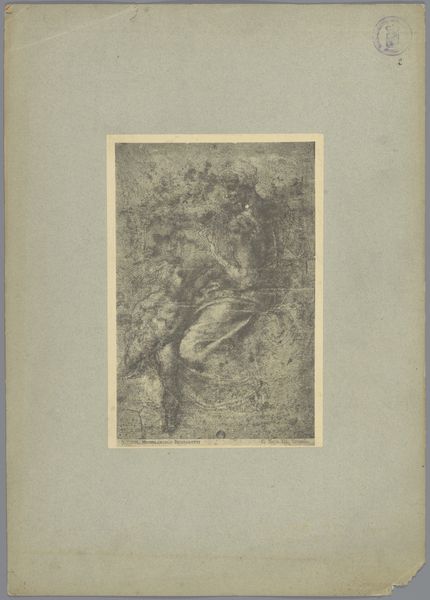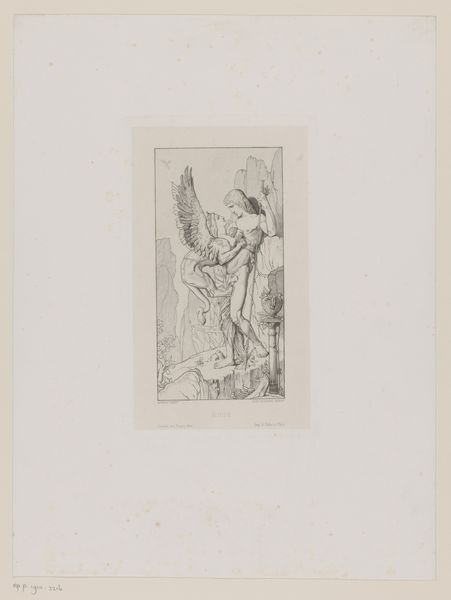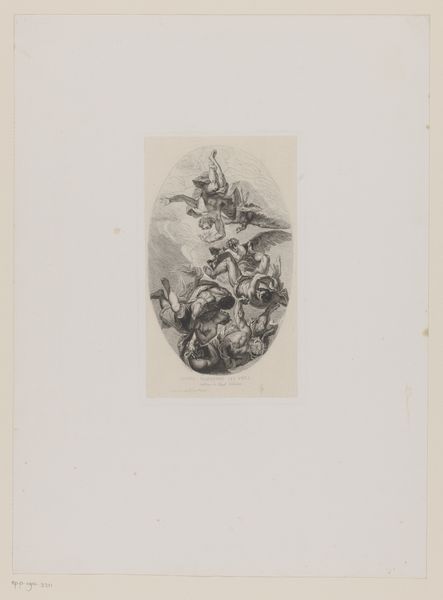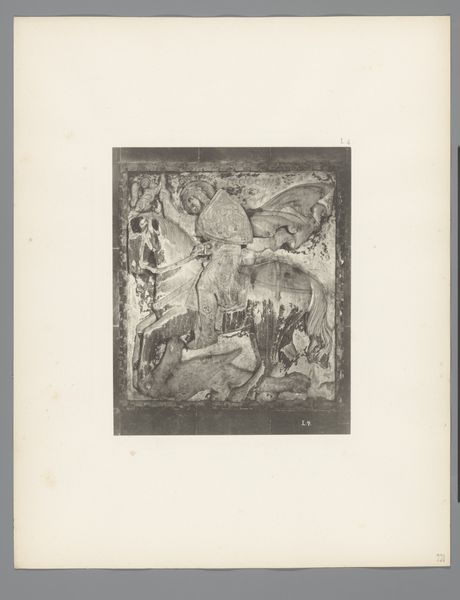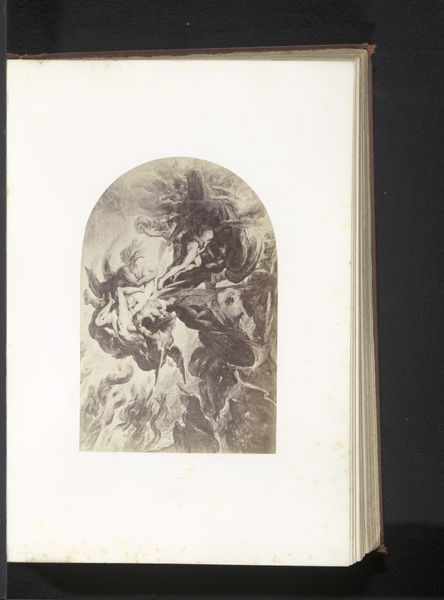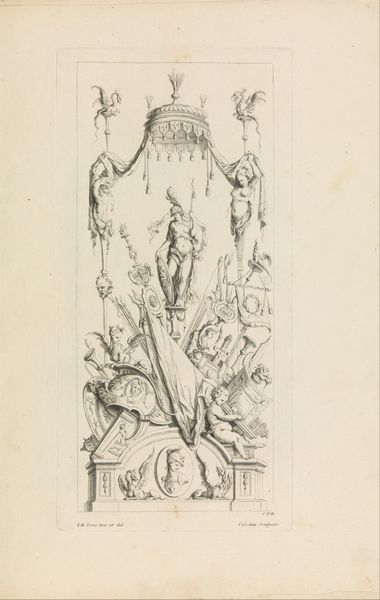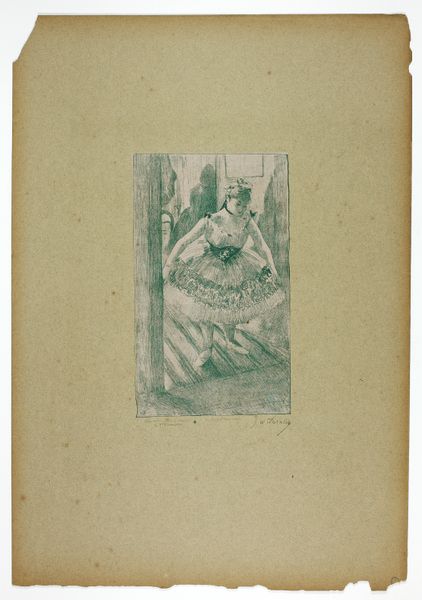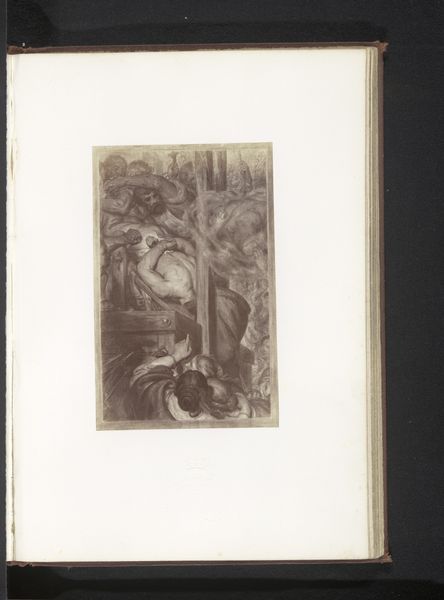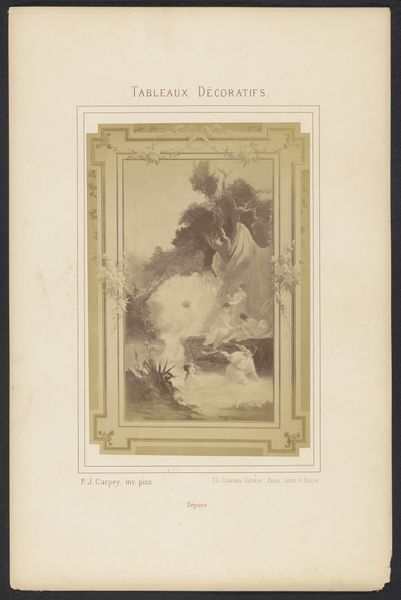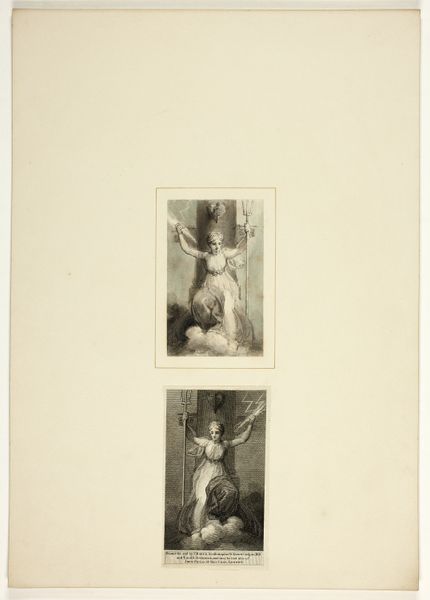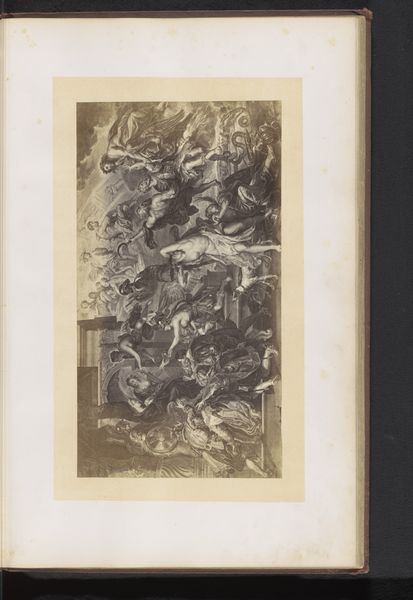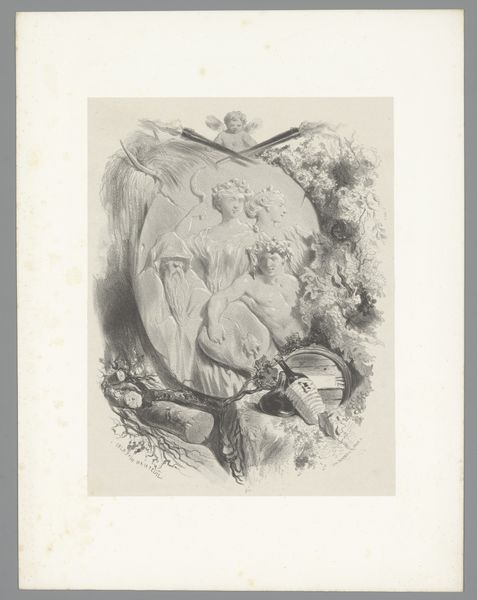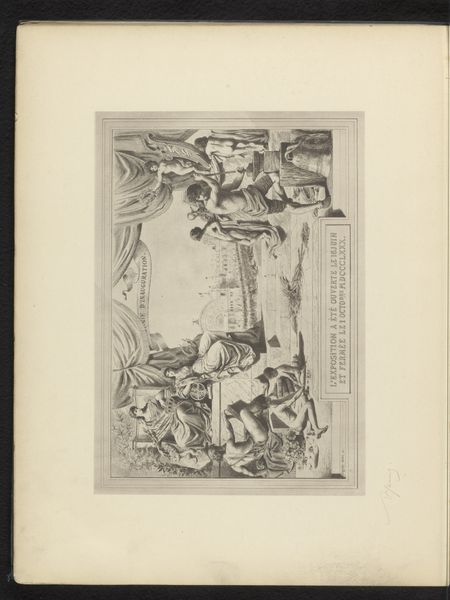
drawing, paper, ink
#
drawing
#
narrative-art
#
ink painting
#
classical-realism
#
charcoal drawing
#
figuration
#
paper
#
ink
#
history-painting
#
academic-art
Dimensions: overall: 49.7 x 37.8 cm (19 9/16 x 14 7/8 in.)
Copyright: National Gallery of Art: CC0 1.0
Curator: Here we have Michael Trekur's "Wall Paper," an ink drawing on paper created sometime between 1935 and 1942. Editor: It immediately strikes me as melancholic. The grayscale palette, the desolate landscape, even the figures exude a certain sadness. It almost feels like a ruin. Curator: Indeed, notice the fallen architectural elements in the lower register. It speaks to a process of decay, perhaps reflecting broader social anxieties during that tumultuous period. The use of ink on paper allows for delicate linework, but also easily conveys a sense of impermanence. Was this work, in a way, conceived to be degraded with a function implied in the very title of the piece? Editor: I'm drawn to the figure of the woman in the center, and Cupid above. She is seemingly suspended between the earthly ruins and the heavens. It’s an interesting rendering of Psyche, almost pinned between Eros and oblivion. Her face projects, certainly, a somber countenance, as if resigned to some great loss. It begs the question: what did such figures signify at that time? What collective sorrows or aspirations were they meant to express? Curator: Perhaps Trekur saw the classical myth as a means to discuss societal vulnerabilities, given its relatively modern creation. What do we consume when we consume myth, reproduce its motifs in yet new materials, and times? Even the deliberate creation of what amounts to figurative "wall paper" complicates the art-making project itself: for a mass market, or simply, another rendition on paper? Editor: It's fascinating to consider. The symbolism is potent: fallen empires, the yearning for love amidst decay. It could certainly mirror a deep sense of cultural loss experienced in that era. Even if the myth appears trite at a certain glance, it's interesting to observe how specific makers and moments imprint the symbolism of certain stories, motifs, icons, with feelings or anxieties. Curator: And how that reproduction occurs not only on canvas, but mass-produced consumer items; that an artistic sensibility suffuses the home, becomes "wall paper," speaks of a commitment and trust in making an art object more than merely itself. Editor: Seeing it this way offers a completely fresh understanding of the anxieties beneath. Curator: Precisely; the context of its creation enriches our encounter with its symbols, technique, and the materials themselves. Editor: Thank you for showing me this today. The conversation has given me much to ponder about both personal sorrow and widespread cultural grief in visual imagery.
Comments
No comments
Be the first to comment and join the conversation on the ultimate creative platform.
